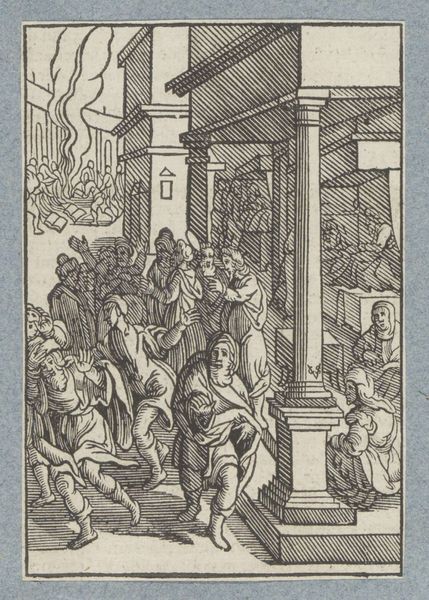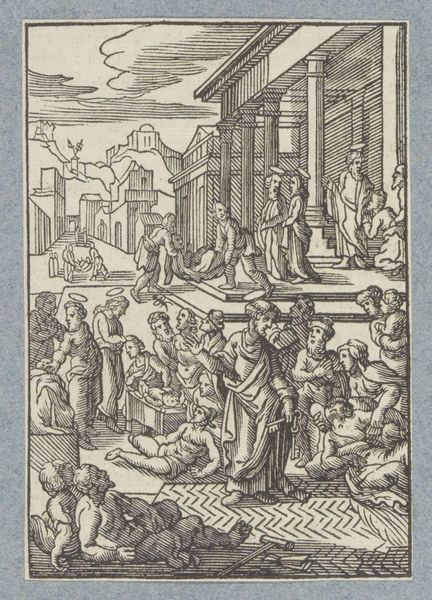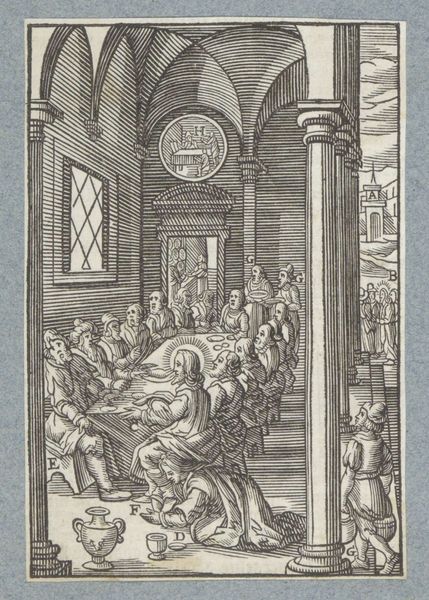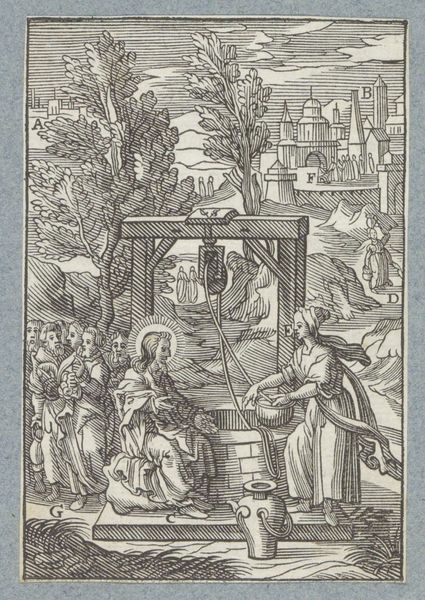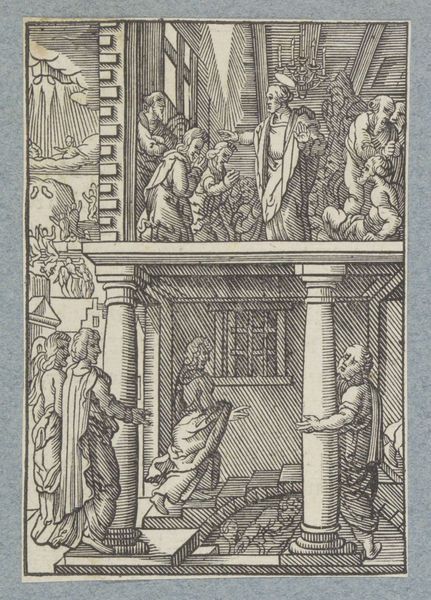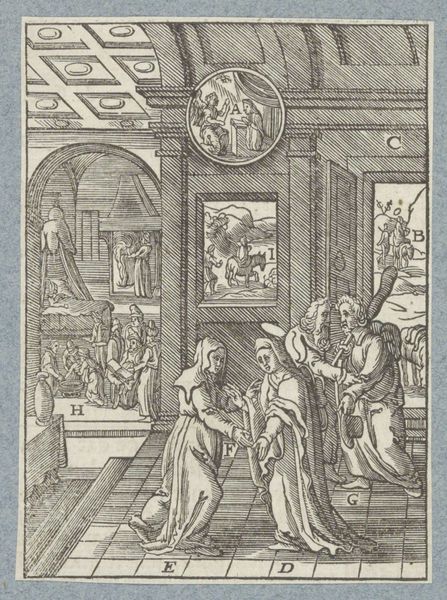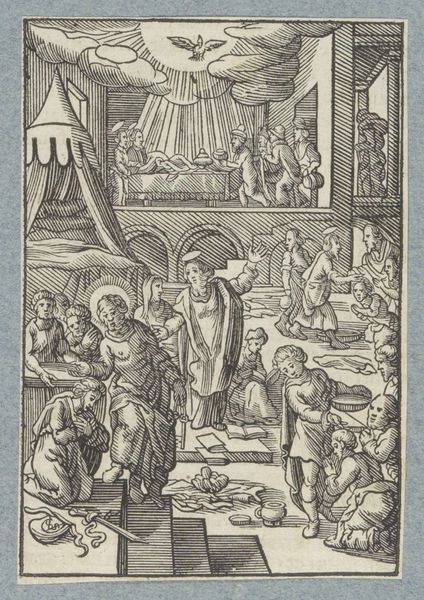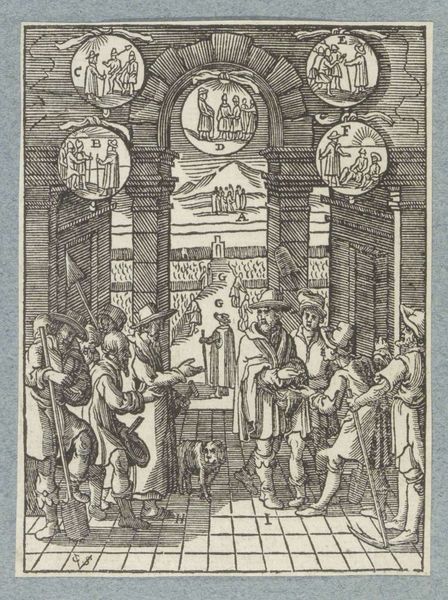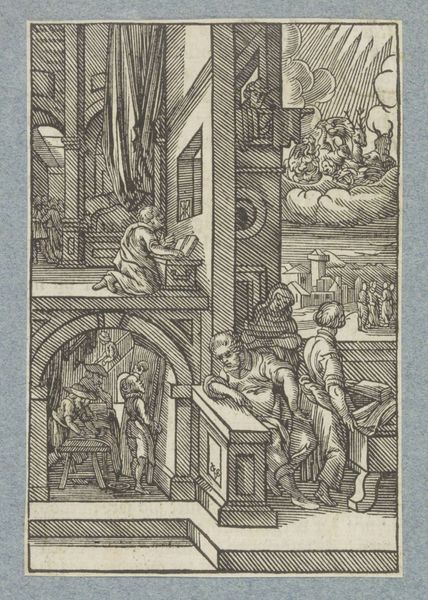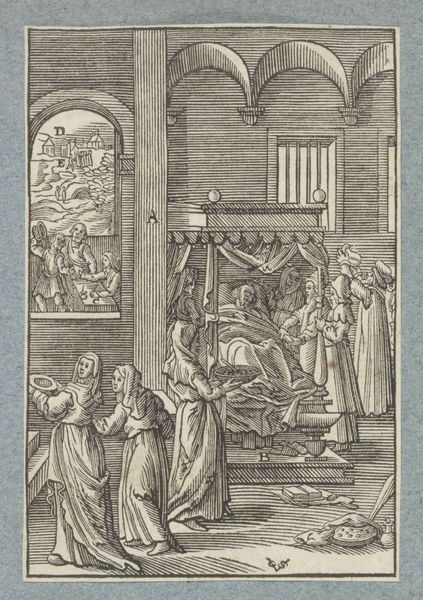
Christus aan de maaltijd in het huis van Simon in Betanië 1629
0:00
0:00
print, engraving
#
narrative-art
# print
#
figuration
#
line
#
northern-renaissance
#
engraving
Dimensions: height 112 mm, width 75 mm
Copyright: Rijks Museum: Open Domain
Curator: The mood of this image is certainly serious, reflective, and possibly somber, given the Northern Renaissance style's somber palette of engraved line work. Editor: You're right, it does have a weighty feel. This is "Christus aan de maaltijd in het huis van Simon in Betanië," or Christ at the Meal in the House of Simon in Bethany. It’s an engraving from 1629 by Christoffel van Sichem II, currently held at the Rijksmuseum. Curator: Engraving requires a meticulous process of carving into a metal plate. I'm wondering about the relationship between the artisan's labor and the religious scene portrayed; this laborious task reproduces an act of supposed communion and spiritual exchange. How do these processes relate? Editor: Well, in considering how class and power operate, remember who is seated and who serves, or more generally, who is included and who is left out. This piece allows us to ask probing questions about social hierarchies inherent within religious depictions, or even religious communities, that privilege certain identities over others, whether gender, religious views, or ethnicity. Curator: The lines feel precise, economical. It almost feels as though the work strives for direct representation despite the limitations inherent within the engraver’s painstaking production process. There is so much detailed activity! Are all figures depicted with equity? Editor: Equity is, perhaps, too generous of a word. One can read this work as a critical assessment about the role of outsiders and the spectacle of divine accessibility. Some are given preferential treatment while others remain merely peripheral to Christ's divine spectacle. Who has access and why? Curator: Your highlighting of social hierarchies and power dynamics does add a sobering and provocative layer. Focusing on those social dynamics opens up many new questions regarding how art operates not in a bubble but within complex material circumstances of production. Editor: Indeed, that’s part of its lasting appeal—it forces us to confront these very inequities by visualizing them, prompting questions and discussions centuries later, in a completely new set of contexts.
Comments
No comments
Be the first to comment and join the conversation on the ultimate creative platform.
